Even though car owners never expect irregularities in the exhaust system, bad days may come sooner or later. White smoke from the exhaust when accelerating is such a kind. But why does this happen?
White smoke from the exhaust is a red flag. And if the smoke is becoming denser day by day, it’s a sign of bigger problems (if not fixed asap). Eventually, if the problem stays, someday, you’ll end up with engine failure.
You might also witness color variants in the smoke emission – blue, gray, and black. Each of these implies a different source and stage of the problem. Whatever the culprit is, in this article, I’m gonna break them for you.
Also, you’ll get to learn how to diagnose the problem first, then find the causes, and at last, fix this smokey issue.
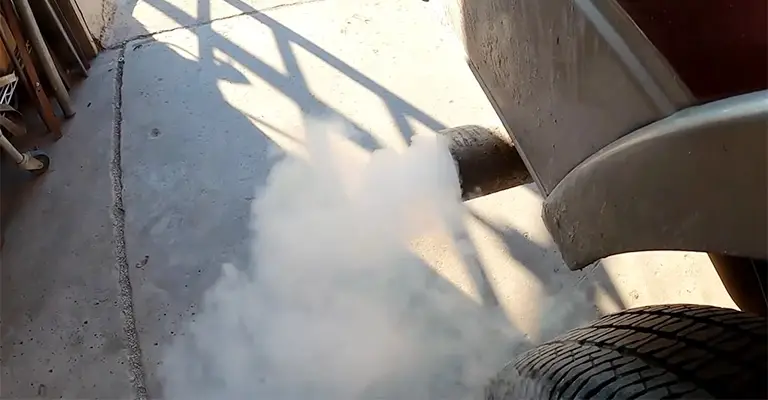
Get to Know the Malfunction First
Before finding the reason behind the excessive smoke emission, it’s vital to identify when the problem occurs. In that way, you can take the necessary precautions.
Typically, when you see smoke coming from car exhaust, it’s not what it looks like. As you turn off the engine for a long time, it becomes colder over time.
And when you turn on the engine, the system heats up suddenly. So, the engine produces a byproduct of the combustion reaction called water vapor, which condenses and turns into steam. This is what you see as white smoke.
8 Possible Causes and Fixes for White Smoke Emission of Your Car
The bad part of the white smoke issue is- it can be caused by single or multiple malfunctions. Depending on the reasons, the issue can be mild or severe.
If you’ve got a bit of knowledge about cars’ inside, you can try any of the approaches given below to treat the white smoke emission. Make sure to read all sections.
“The below guide is only shared to give you an idea of the primary steps for minor white smoke fixings. In no cases shall the author be responsible for damages caused by you. Do it at your own risk.”
Oil Leakage
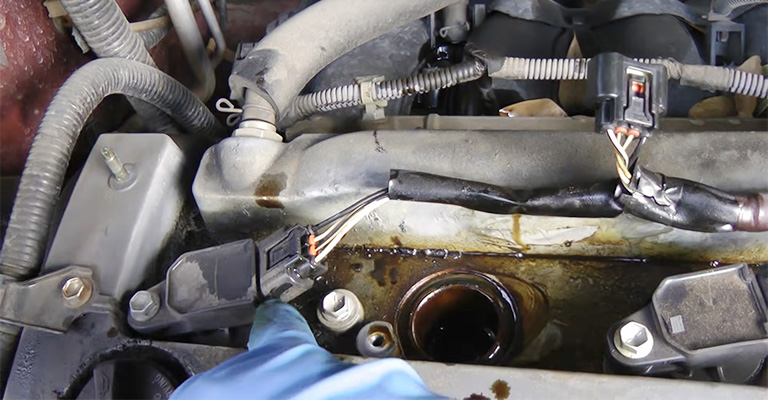
There are two pathways through which the engine oil mainly flow, the piston ring and the valve seal. If any of these get damaged, the oil leaks. The worst part is then it dips into the combustion chamber’s fuel. And this interaction between two different temperature substances causes smoke emission from the exhaust system.
Solution: Replace Oil Control Ring or Patch the Leakage
If the problem is with the piston ring, you need to replace it immediately. Piston rings’ price is unpredictable (mostly depending on the car engine type.)
Since the problem is related to the oil ring, this might cost you anywhere from $55-$3000.
In the case of the valve stem seal, you’ll also need replacement. The average cost range of valve seal is around $35-$140.
“An urgent fix for this leakage is necessary, especially for older vehicles. Because the lubricants on old engine parts are sensitive to the oil contact, they wear faster than usual. And if this continues, you’ll have to bear more expensive repairs.”
Broken Cylinder Part
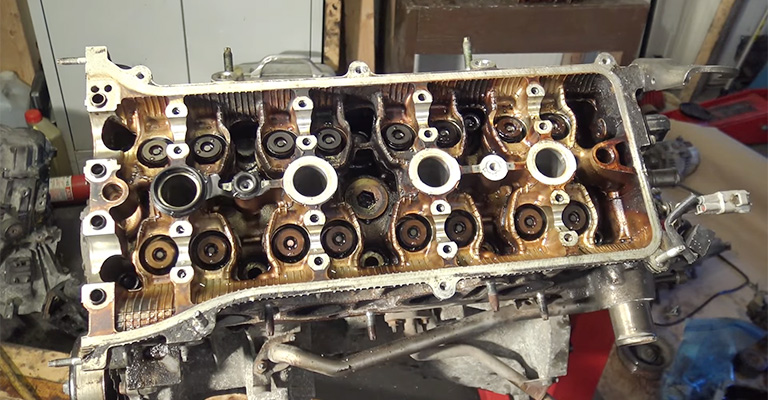
A cracking and snapping of a cylindrical surface is another reason you’re facing excess smoke.
The engine cylinder holds a special coolant (either liquid or gas) treatment to control the heat generated when you turn on the machine. When any part of the cylinder breaks, the element seeps from it and mixes with the engine oil.
And like before, as the two elements with different temperatures get into contact, they produce smoke/steam. Then it emits through the exhaust pipe.
“Unlike the oil leakage issue, this one tends to generate a distinct odor as well. It’s the primary sign of finding the source of the problem.”
Solution: Examine the Cylinder Heads
As mentioned earlier in the article, a broken cylinder head is another culprit, causing your car to smoke out. Whether you need to repair the cylinder heads or replace them depends on their condition.
Similarly, how much the mechanic would charge for the repair can vary based on the cylinder head model you got.
Usually, the cylinder head repair cost starts from $75 to up to $500 and more. On the contrary, replacing a new unit may cost you from $2,400 to $3,900.
Unusual Condensation
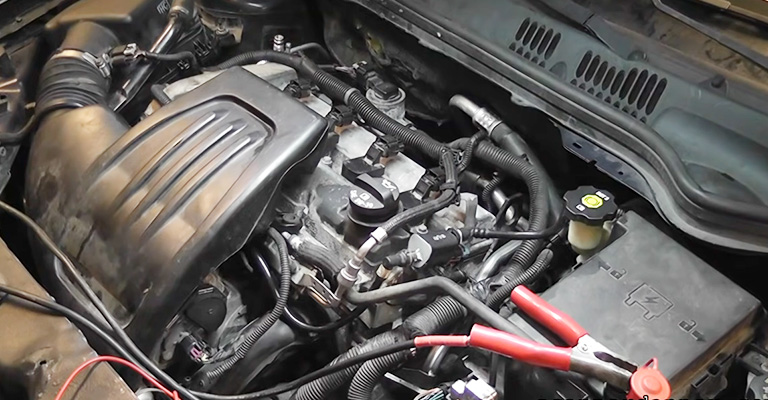
If the white smoke is caused by condensation, you can get relief from the tension. Condensation is actually a car engine’s built-in system. The process ensures the release and conversion of vapor/gas to water when accelerating.
On summer days, this issue is rare. But it frequently happens in winter. However, whenever it occurs, the smoke emission shouldn’t exist for more than 60 seconds.
Solution: Park Indoor
When it comes to condensation-related issues, there isn’t much you can do. The only way to witness this issue is to avoid parking outside of the garage.
In that way, you can mitigate the excessive temperature fluctuation, which causes inadequate condensation. Besides, you don’t need to worry as well, as it’s related to environmental factors.
Leakage in Coolant Flow Pipes
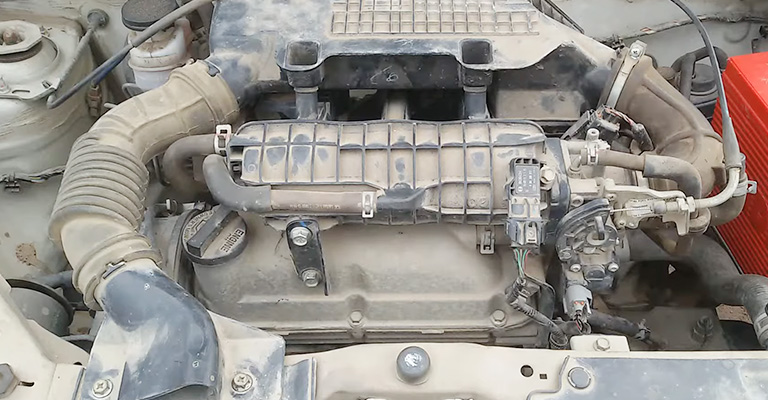
Without a damaged cylinder, the coolant system could have different types of leakage. In general, other types occur in other engine pipes that drive the coolant.
Because of this leakage, coolant flows, and the engine’s natural cooling system gets interrupted. As a result, the car’s internal parts overheat and outflow white smoke every time you accelerate.
As mentioned before, when the white smoke is caused by coolant leakage, it spreads a smell of the liquid.
“Coolant pipe leak eventually causes head gasket failure as the engine system becomes unable to seal the flow properly.”
Solution (Step 1): Check the Manifold Gasket
The gasket ensures the adequate flow of coolant and oxygen to the engines. As a primary step, you need to check this gasket. Since these gaskets are made of high-end plastics, you may only spot minor cracks.
Automobile mechanics usually use plastic welding and gluing methods to fix the issue (if identified earlier.) However, a bigger crack requires a manifold gasket replacement.
Solution (Step 2): Look into the Main/Head Gasket Workflow
You need to check the head gasket after analyzing the manifold gasket. If there is a faulty head gasket, it’ll enable overflow of the coolant in the cylinder. You can identify that by inspecting the coolant pipes and engine blocks.
If the head gasket is the source of the problem behind the white smoke, consider replacing it asap. It may cost anywhere from $1,600 to $2000, excluding the labor cost.
Malfunctions in the Engine Control Unit
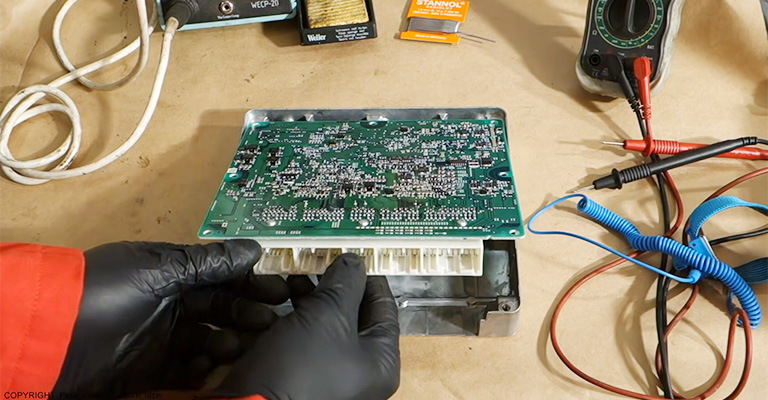
ECU or Engine Control system is also known as Engine Control Module. This module monitors and maintains the primary actuators of all internal combustion engines. With ECM’s (Engine Control Module) support, automobiles are able to provide the required performance.
Things go wrong when this unit stops performing in the usual manner. When it malfunctions, insider fuel injectors cannot maintain regular workflow timing. This irregularity also causes white smoke when you accelerate the engine. In such cases, an urgent configuration is mandatory.
Solution: Get Professional Support
If the problem source is your engine control system, get your car to the nearby manufacturer’s authorized service center first. Otherwise, find a repair shop.
To fix this issue, often, automobile mechanics unplug the car batteries for a while and replug them afterward. It’s like a reset. However, it’s not suggested to try by a newbie.”
Fuel Injector Acting Wrong
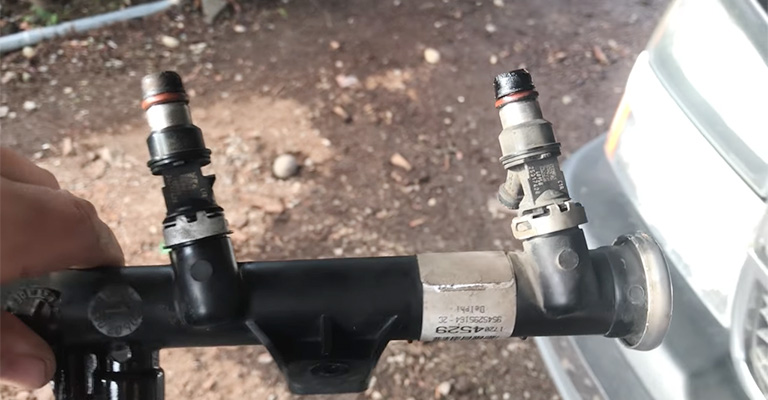
White smoke can be caused by a defective fuel injector as well. This automobile unit works magnificently. It ensures getting the intake following a specific angle. And because of that, the engines enable a proper compression of air and fuel mixture, which drives into the combustion chamber.
Any of the flows might get hampered if there is a defect in the fuel injector. Usually, it’s a jam in the injector unit, which keeps it stuck open. Moreover, there can be a leakage in the O-ring.
When it’s a leakage issue, engines witness excessive fuel flow and burn enough simultaneously. When the amount of fuel burned increases, you’ll also see an upsurge in the white smoke.
Even though you found the issue with the faulty fuel injector, there are still worries. In general, cars have one fuel injector for one cylinder, meaning the more cylinders you have, the more confusing it becomes to identify the problem source.
Solution: Clean the Fuel Injector
If the fuel injector’s jam causes the white smoke, I must say you’re fortunate. Because at least, you don’t need to spend a whole bank. It’s easy to clean the clogged hose with a fuel injector cleaner.
In the case of O-ring leakage, some DIY YouTubers may suggest you don’t replace it, but I won’t advise this approach. A new O-ring costs you only around $10 to $25. So, it’s wise to get a new one.
Excessive Intake of Transmission Fluid
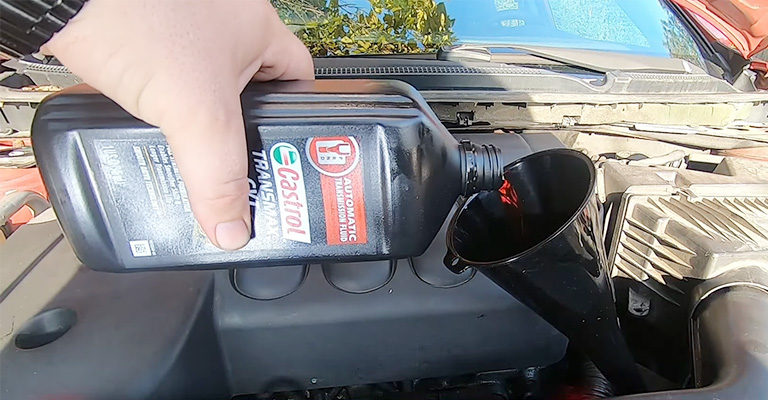
Transmission fluid is directly related to acceleration and gears. So, if there is white smoke emission when you accelerate, a faulty transmission fluid can be the reason.
Usually, when the problem is with the TF, there would be a heavy burning smell. It happens because there is an immoderate level of fluid flow through the vacuum pipe. And your vehicle engine starts to burn additional oil to maintain the engine workflow.
Solution: Apply Balanced Fluid
Always follow your car’s manufacturer’s manual when adding transmission fluid. Also, don’t go for cheap brands when choosing the transmission fluid. It might harm your car engine.
Damages in the Engine Block
If any of the engine blocks are broken, the fluid and oil seep together and get mixed inadequately. In a terrible situation, you might expect this to happen to your car.
Needless to say, any kind of defect in the engine results in a big pocket repair. Another bad part is you can even identify the issue without professional help.
Solution: Inspection of the Engine Block
Since engine blocks are a major issue and can result in white smoke upon accelerating, you should consider examining them first. If the issue is there, the expert will do any of the below fixings to resolve the problem.
- Patch the crack
- Weld the defect
- Metal stitch
The bad part is that all 3 methods are equally expensive and need professional help. You may need to spend anywhere from 2500 to 4400 bucks.
Different Types of Smoke Emission from the Exhaust System
Blown-out smoke can be different colors as well. Although white smoke is caused by many reasons, other colored smoke indicates specific issues, helping you find the root earlier. Let’s check out the meanings of different smoke colors coming from the exhaust system.
Black/Dark Gray Smoke
Just like white smoke, the black smoke emission also points to different sources of problems. However, in general, the result is caused mainly by gasoline burning. And your engine burns an inadequate amount of gasoline because of the following reasons.
- Jammed manifold gasket
- Excessive fuel pressure
- Clogs in the air filter
- Faulty fuel injector
Thin or Light Smoke
Your vehicle starts emitting light and thin smoke when the issue is related to condensation. However, you can’t exactly address it as a problem as it’s water vapor. Usually, it appears upon turning on the engine and is common in most vehicles.
Blue Smoke
Another abnormal smoke color is blue smoke; sometimes, it’s also gray. Whenever your car’s engine system leaks oil and then starts burning, it results in this color of smoke. Because of the burn, you can smell it.
All car systems are made to maintain proper lubrication of the engine’s parts. This lubrication isn’t allowed to access the fuel unit. However, when this access occurs, you’ll witness blue or gray smoke in the air.
In general, these leakages happened due to the following reason:
- Broken piston rings
- Worn-out cylinder surface
- PCV valve seal failure or defects
In terms of blue smoke emission, it’s crucial to resolve the issue asap and get help from a mechanic.
Frequently Asked Questions
How do I fix white smoke from exhaust?
You can’t fix white smoke from exhaust issues if you’re not an expert in the field. The smoke is caused by serious malfunctions in the engine workflow, requiring professional handling. Besides, the fixing requires either replacement or repairs, depending on the problem source.
Is white smoke always mean a blown head gasket?
White smoke emission from your car doesn’t always mean you’ve got a blown head gasket. However, it’s one of the common reasons. There can be other reasons, such as oil leakage, broken cylinder part, unusual condensation, leakage in coolant flow pipes, etc.
Why white smoke comes out of my exhaust but not overheat?
Sometimes you may witness white smoke coming out of your exhaust. However, it doesn’t show an overheating sign. When this happens, there is a high chance that the coolant leakage causes the issue.
Can spark plugs cause white smoke?
Spark plugs don’t cause white smoke in cars. The possible reasons are discussed above.
Does white smoke mean a blown engine?
The emission of white smoke doesn’t mean you end up with a blown engine, at least not initially. However, if not diagnosing the issue soon, the cause might overheat the engine and blow it.
Can I drive my car with white smoke?
It’s wise not to drive your car while witnessing white smoke. Since, in general, the reason is burned oil, it might overheat the engine and cause serious consequences. However, if it’s caused by coolant leakage (you’ll get a sweet smell), you can at least take some time to get the car to the mechanic.
Conclusion
That’s the ending of the discussion on why white smoke from the exhaust when accelerating a car. There can be any of the 8 reasons behind this consequence. The primary approach to solving this problem is to stop driving and identify the source.
After figuring out the issue, try to get help from an automobile mechanic. In most cases, he’ll come up with replacement solutions, which are pretty costly. And if you’re fortunate, a budget repair may fix the issue.
Leave a Reply